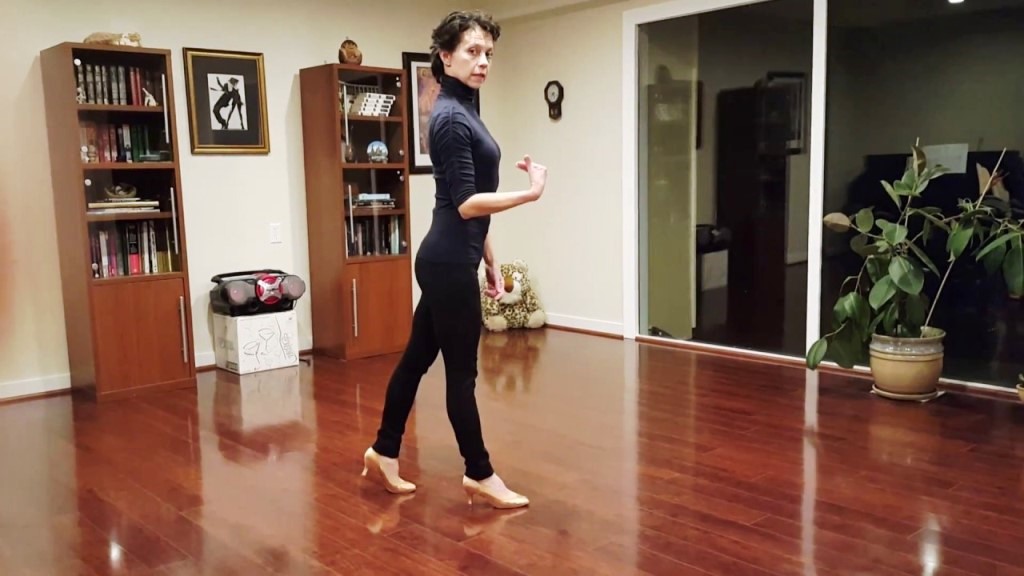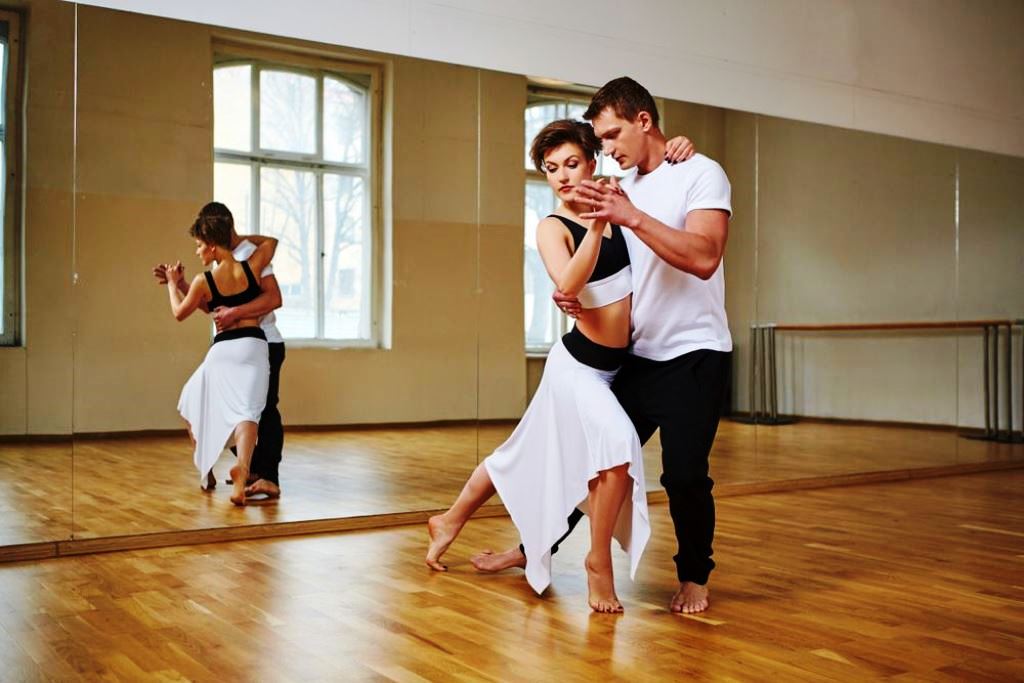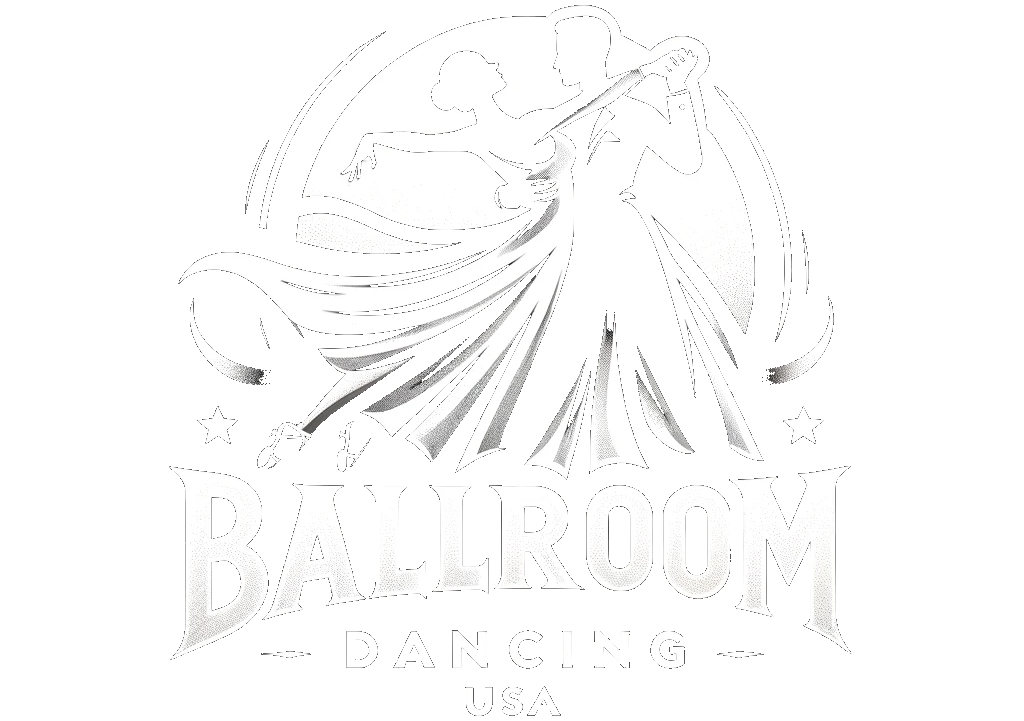
- Start in closed position. That means each partner’s right foot is pointing between the other partner’s feet. Each partner is facing the other partner’s right shoulder. Do not turn your bodies to face each other. Your bodies should be parallel to each other and slightly offset to the left of center.
- Beginners and novices should NEVER watch their feet (at dance speeds). Here’s why.
- Light travels from your feet to your eyes at 300 million meters per second.
- Nerve impulses travel from your feet to your brain at a maximum speed of 200 meters per second, but there are also lots of synapses along the way, and nerve signals cross these by a chemical means which delays the signal even more.
- The signals arrive in the processing part of the brain at different times.
- Light wins every time – by a significant amount of time.
- For novices and beginners it is not possible for the brain to ignore one of these signals.
- For any of the faster dances this time differences is a significant portion of the beat time.
- The brain switches back and forth between the two sources of input.
- Switching between sources changes the timing from being on the beat to being between beats.
- The result of watching one’s feet is the dancing equivalent of stuttering!
- I find it absolutely amazing how quickly and easily beginning dancers smooth right out and feel progress as soon as they stop watching their feet.
- So, watch your partner, or watch somebody else’s partner, but NEVER watch your feet at dance speeds (unless you are an expert).
- Learn “school figures” that are done on walls and corners. Make your turns and figures that involve turns conform to the school figures using 45, 90, 135, 180 degrees, etc. Watch the walls so that after a 180 degree figure you are facing the opposite wall. This will help you develop the control and precision that will allow you to go exactly where you want to. Once you are on the dance floor, you can relax these limits, but following the school figures always looks better. If you can’t do the school figures “right”, you won’t be able to control your dancing very well.
- Teach on consistent compass headings. Teachers should be aware of significant gender differences between men and women. Women, in general, are better at seeing relationships; they navigate using landmarks. Men navigate in terms of directions. This means that, for most men, starting to learn a new step is just like learning to go somewhere. Change the direction or compass heading, and it become learning to go someplace else! There are always exceptions, but, most of the time, changing compass headings during the teaching of a step results in losing many leaders. We get frustrated when a teacher fails to account for this basic gender difference. Advanced teachers I have seen never make this common mistake.. It is imperative that a good teacher take this into consideration. Never change the directions used when teaching a new step to men, until the step is thoroughly learned on one compass heading. If a part of a new step ends up on a different compass heading than the earlier part, ALWAYS start the next part on the same heading that the last part ended. Do not rotate the compass heading while teaching the step. For example, the cross-body lead in the cha-cha begins on one direction and finishes facing the opposite direction. If you are teaching a sequence that includes the cross-body lead, and then adds a new step, the new step should start facing the direction the cross-body lead ended on.
- Learn and follow ballroom dance floor etiquette.
- Some dance figure names





